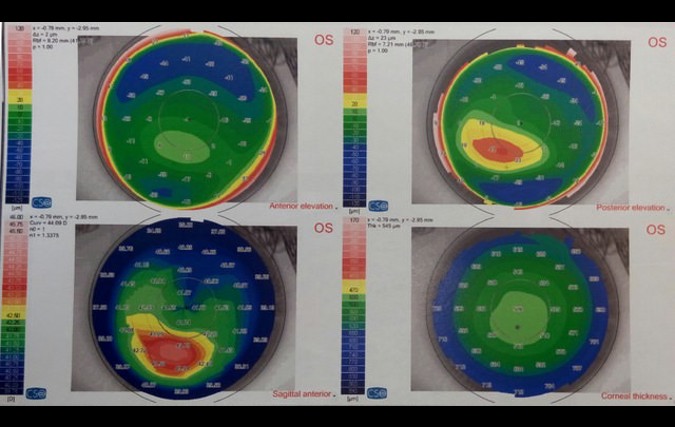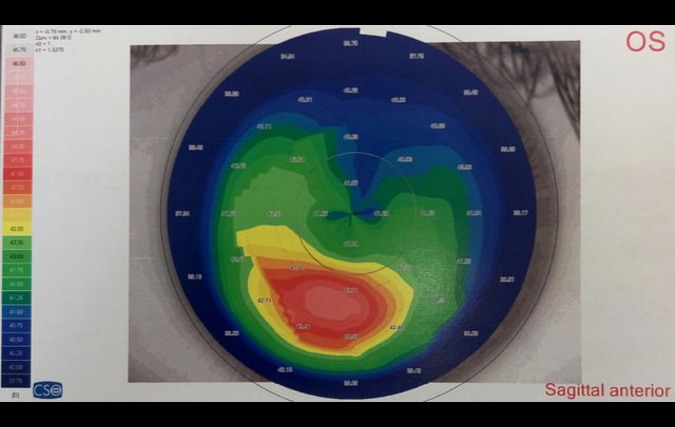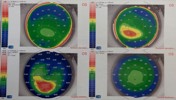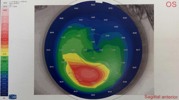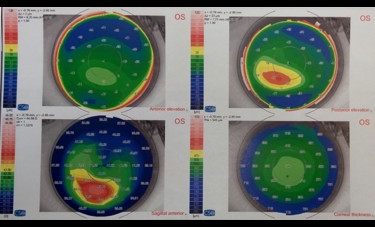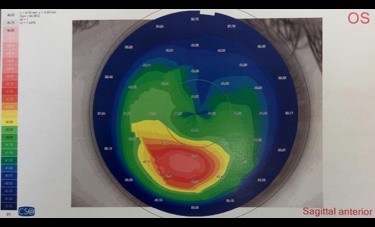Introduction
Keratoconus (KC) is a thinning of the cornea, which leads to high myopia, irregular astigmatism and even corneal transplant (Romero-Jiménez et al., 2010). Although etiology is unclear, KC patients report a positive family history of the disease (e.g. Shneor et al., 2013). The incidence of KC in the general population has been estimated to be between 2 and 23 per 10,000 (Wagner et al., 2010) and prevalence of 5.4 per 10,000 (e.g Rabinowitz, 1998). In this study we aimed to determine the risk of KC in family members of the proband patients and look for risk factors for KC.
Methods
Autorefraction and autokeratometry (L-80), corneal topography and pachymetry (Sirius), visual acuity (Snellen), slit lamp biomiscroscopy and retinoscopy were done on family members. A diagnosis of KC was based on abnormal topography and at least on one clinical sign (Rabinowitz, 2003).
Results
3 families, 16 subjects (7 male and 9 female) and 3 probands were examined. Refraction and cylinder range of -8.84 to 1.5D and -2.32 to 0D. respectively. Average K readings was 7.5±0.34mm (range: 6.81 to 8.22mm). Average of thinnest corneal thickness was 536.57±34.25µm (range: 444.41 to 599.46µm). No significant differences were found between the Avg K and thickness values of the subjects that were testes and the general population (p=0.17). We found 2 subjects with a diagnosis of KC and 1 subject with subclinical KC characteristics.
Conclusions
There is an indication for high prevalence of KC signs in family members of KC, therefore KC screening for family members is essential.. Future studies with a larger subject group is necessary.


